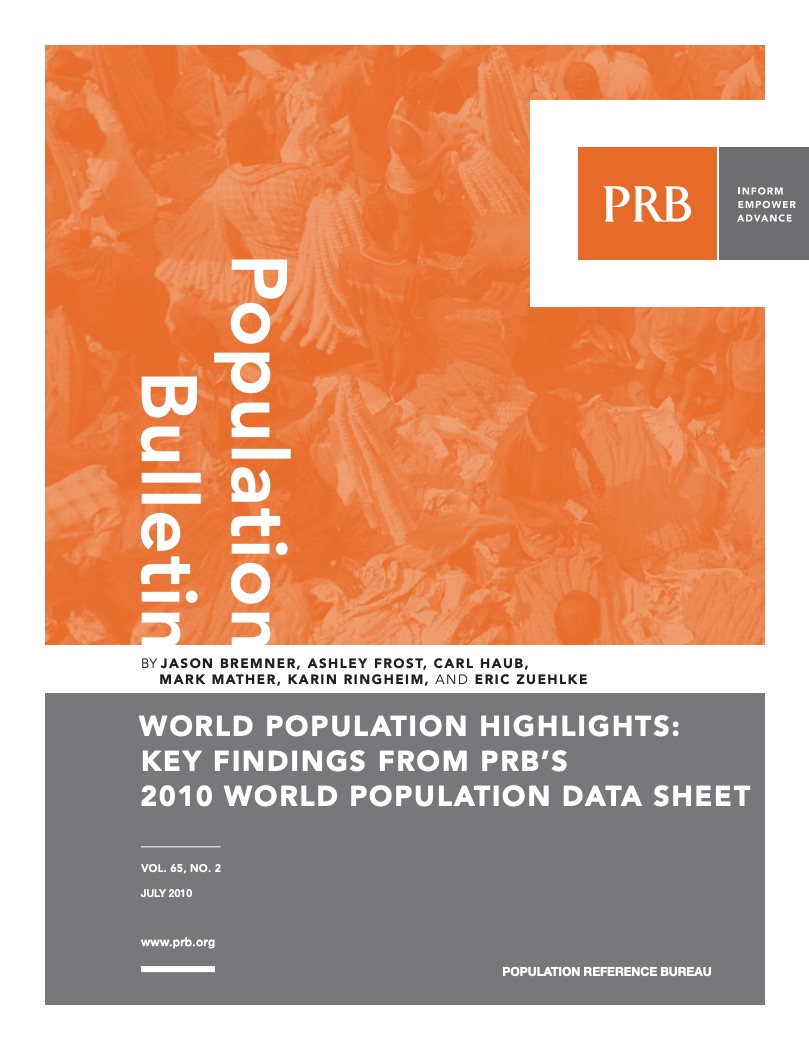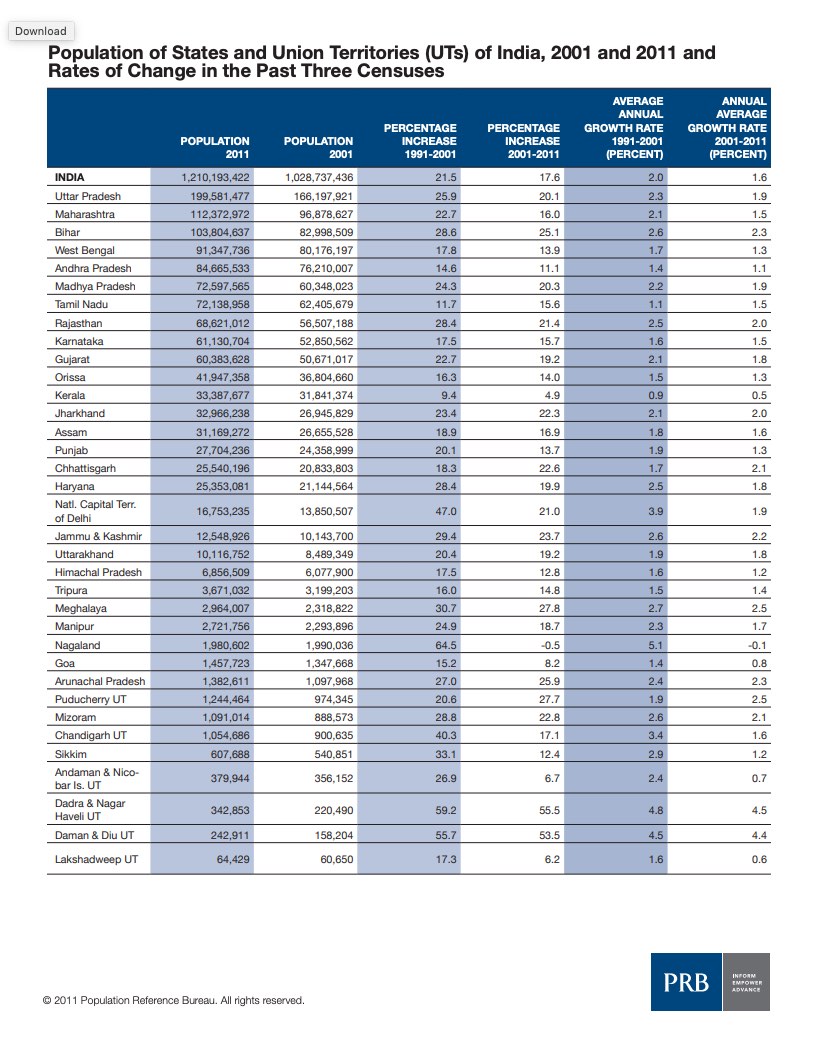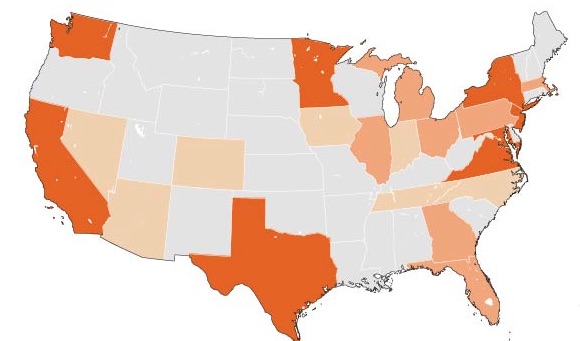36 Search Results Found For : "̼ȸ 01_721_215 翪ȸü ̽ȸ ̵ Z߾ӿ ʽŵҾȸ"


Table: Population of States and Union Territories (UTs) of India, 2001 and 2011 and Rates of Change in the Past Three Censuses
(2011) Together, China and India account for 37 percent of the world’s population. Both countries have conducted censuses over the past year, and when they report their census results, figures such as the widely accepted world population total are at risk of changing.

Women and Girls at Risk of Female Genital Mutilation/Cutting in the United States
(2016) Although FGM/C is most prevalent in sub-Saharan Africa, global migration patterns have increased the risk of FGM/C among women and girls living in developed countries, including the United States, according to PRB analysis published February 2015.

India Releases Latest Census Results, Showing Population Catching Up to China
(2011) Together, China and India account for 37 percent of the world’s population. Both countries have conducted censuses over the past year, and when they report their census results, figures such as the widely accepted world population total are at risk of changing.

Project: Demography and Economics of Aging and Alzheimer’s Disease
Aging and Health in China: What Can We Learn From the World’s Largest Population of Older People?
The United Nations projects that there will be 366 million older Chinese adults by 2050, which is substantially larger than the current total U.S. population of 331 million.
Germany: Beyond the Transition’s End
(2011) Germany's recovery from the devastation of World War II is often called an "economic miracle" because its economy is now Europe's largest. Immigration has been an important part of the country's modern demographic history.
The U.S. Recession and the Birth Rate
(2009) Speculation has been rife in the media on the possible effect of the current recession on the U.S. birth rate. In January of this year posed this same question but now, at mid-year, unemployment is approaching 10 percent for the first time in over a quarter century, the housing "bubble" has truly burst, banks and industries that have been pillars of the economy have gone bankrupt, and consumer confidence has reached one of its lowest points in the past 50 years.
The Status of the HIV/AIDS Epidemic in Sub-Saharan Africa
(2002) Despite the fact that sub-Saharan Africa contains only about 11 percent of the Earth's population, the region is the world's epicenter of HIV/AIDS.

